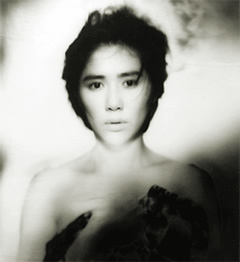shohei imamura

Remembering a Master - Shohei Imamura
"I am interested in the relationship of the lower part of the human body and the lower part of the social structure on which the reality of daily Japanese life obstinately supports itself."
Shohei Imamura, one of the most significant filmmakers of Japan's postwar generation, died in Tokyo last month. He was 79. Born in 1926, Imamura was considered, along with Nagisa Oshima , Seijun Suzuki and Masahiro Shinoda as the founder of the Japanese New Wave. He made films that delved into the underworld of Japanese society, ripping apart its moral and economic masks. Known for his 'entomological detachment', these dark and intricate films unflinchingly focused on "the lower parts" both of society and humans—prostitutes, pimps, pornographers, black marketeers or others on the margins.
Interestingly, Imamura started his career as an assistant to Yasujiro Ozu, one of the most celebrated of Japanese filmmakers, who has inspired filmmakers all over the world for his meditative style and compositions He assisted him in three films, including the classic "Tokyo Story" (1953). If one looks at Imamura's films, this apprenticeship would look bizarre, for his films were more about "pigs, insects and pornography" rather than the graceful and noble characters that populate Ozu's films.
After a few studio assignments ( Stolen Desire, Nishi Ginza Station, Endless Desire (all 1958) and My Second Brother (1959) he stormed the scene with Pigs and Battleships (1961), a searing depiction of moral decay set in a Japanese port town under American forces. Drawing largely from his own experiences as a black marketeer, the film in a way inaugurates his oeuvre. It was followed by The Insect Woman (1963) which follows the life of a sex worker, The Pornographers (1966), about a purveyor of blue movies in Osaka who gradually retreats from all human contact, Vengeance Is Mine, one of the first films to take a serial killer as a hero, and Eijanaika (Why Not?, 1981). His next film The Ballad of Narayama (1983), which won him his first Palme d'Or, at Cannes was a visceral portrayal of a village in which the elderly willingly embrace death to keep the community's population in balance. It was followed by Unagi (The Eel, 1996), a dark comedy about a man who has killed his adulterous wife. His later films were much more contemplative, like Dr. Akagi (1998) and Warm Water Under a Red Bridge (2001). Imamura's last work was a short contribution to a film anthology about September 11 and the worldwide effects of the tragic incident.
It is only natural that Imamura finds a follower and successor in Takashi Miike, one of the most unconventional of contemporary Japanese filmmakers who is notorious for his violent, overtly sadistic yet deeply introspective films. For he still lives by the Imamura motto: "I want to make messy, really human, Japanese, unsettling films."
C S Venkiteswaran


0 Comments:
Post a Comment
Subscribe to Post Comments [Atom]
<< Home